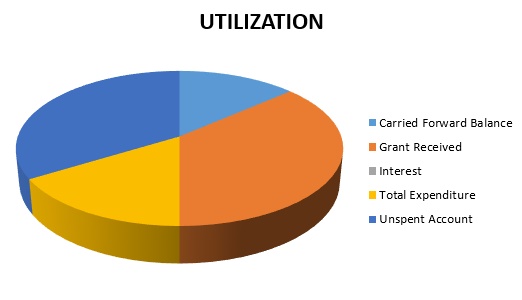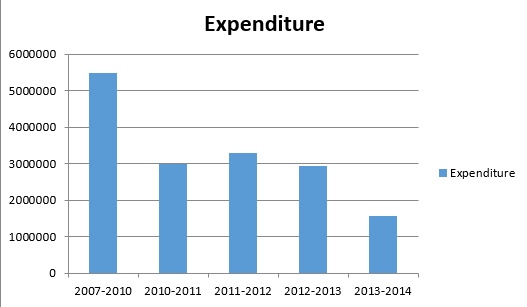MHRD IPR Chair Series: Information Received from IIT, Bombay
This post provides a factual description about the operation of Ministry of Human Resource Development IPR Chair’s Intellectual Property Education, Research and Public Outreach (IPERPO) scheme in IIT Bombay.
The author has analysed all the data received under various heads such as income, grants from MHRD, planned and non planned expenditure, nature and frequency of programmes organised and the allocation of funds for the same. Throughout the course of observation and presentation of the analysed data, the author seeks to trace the presence of unjustified underutilisation of funds by the aforementioned university as provided by the MHRD during the period of 2013-2014.
To collect the information for the given study, an RTI application was filed to the Indian Institute of Technology, Bombay on 17/03/2015 by the Centre for Internet and Society. The reply to RTI application was received on 10/04/2015.
These are the documents received by CIS from IIT Bombay:
-
For RTI Response click here <IIT Bombay - Response to RTI >
-
For complete supporting documents click here <IIT Bombay – Response and Report >
Hereinafter, in order to receive any information about IIT Bombay’s RTI reply, kindly refer to the above mentioned links. Following are the queries mentioned in the RTI application along with their replies.
- Reports on the implementation of the IPERPO scheme of the Ministry of Human Resource Development and the implementation of the MHRD IPR Chair funded under the scheme at IIT Bombay from 2013-2014
- Documents detailing the release of grants to the MHRD IPR Chairs under the IPERPO Scheme
- Documents relating to receipts of utilisation certificates and audited expenditure statements and matters related to all financial sanctions with regard to funds granted to the MHRD IPR Chair established under the IPERPO scheme at IIT Bombay.
- Documents regarding all matters pertaining to finance and budget related the MHRD IPR Chair under the IPERPOs scheme established at IIT Bombay
Reply: The University has provided expenditure statement for the period 2007-2014
Comparative Analysis between University Response and the guidelines of MHRD Scheme Document
The Scheme Document of MHRD (http://copyright.gov.in/Documents/scheme.pdf) is a comprehensive document which consists of guidelines regarding Intellectual Property Education, Research and Public Outreach. It talks about a list of objectives, purposes, conditions and eligibility criteria for a University to ensure in order to implement IPERPO in a truest sense. This document provides the procedural as well as qualifying conditions for an Institute to ensure or fulfil before applying for the MHRD grant. Some of these conditions include maintenance of utilization certificates, audit reports, expenditure statements and event information which would be open to access on demand by MDHR or Comptroller and Auditor General of India.
A. Objective
In order to fulfil the objectives mentioned in the scheme document, the University undertook following activities:
a. Granted two Ph.D. Fellowships
b. Introduced foundations courses at UG, PG Level and two full courses on Intellectual Property
c. Organised 2nd International Conference on MIPS 2014
d. Organised workshops on Patents and IP Policy
e. Enhanced the stock of IP books, journals and databases
IIT Bombay is recognized by the University Grants Commission. Therefore, it fulfils the eligibility criteria mentioned in the scheme document.
Financial Analysis
A. Utilization Details for the Financial Year 2013-2014

In this financial year, a grant of Rs. 35,00,000 was received by the University from MHRD which was added to the carried forward balance of Rs. 13,05,914. Out of the total amount of Rs. 48,05,914, a sum of Rs. 15,66,179 was utilized by the University for the purpose for which it was sanctioned.
B. Expenditure Analysis

This figure highlights that the cumulative expenditure for the period 2007-2010 is almost double the amount of expenditure incurred in other financial years. After this period, the maximum amount of money was spent in the financial year 2011-2012 and the least was spent in the financial year 2013-2014.


